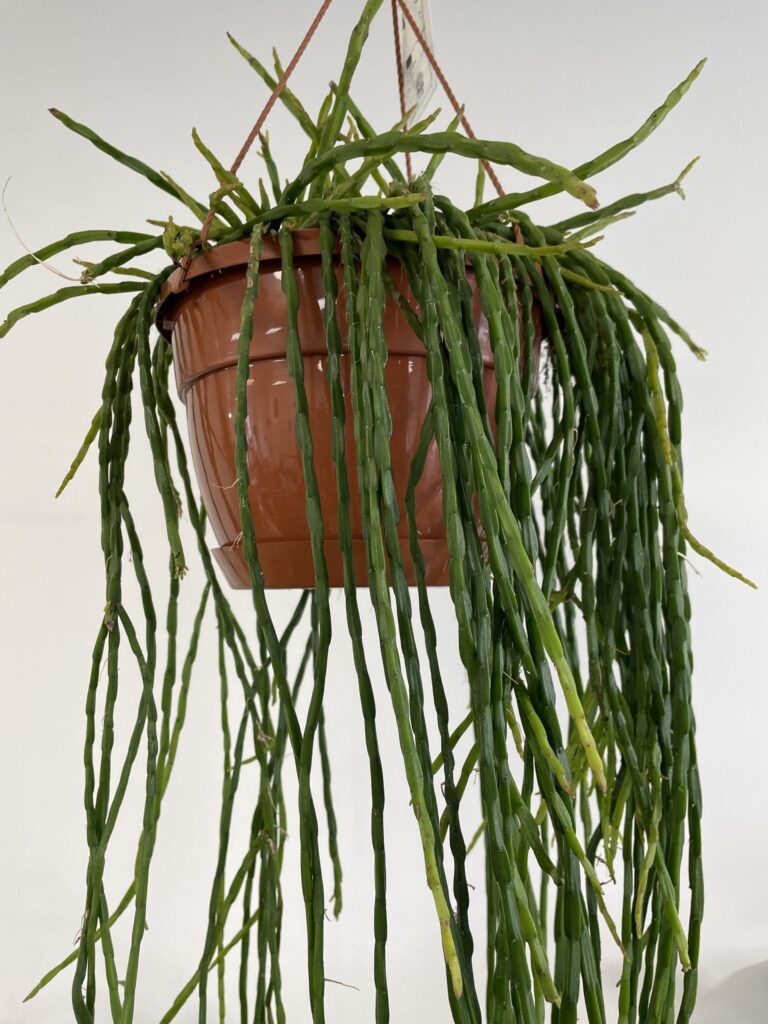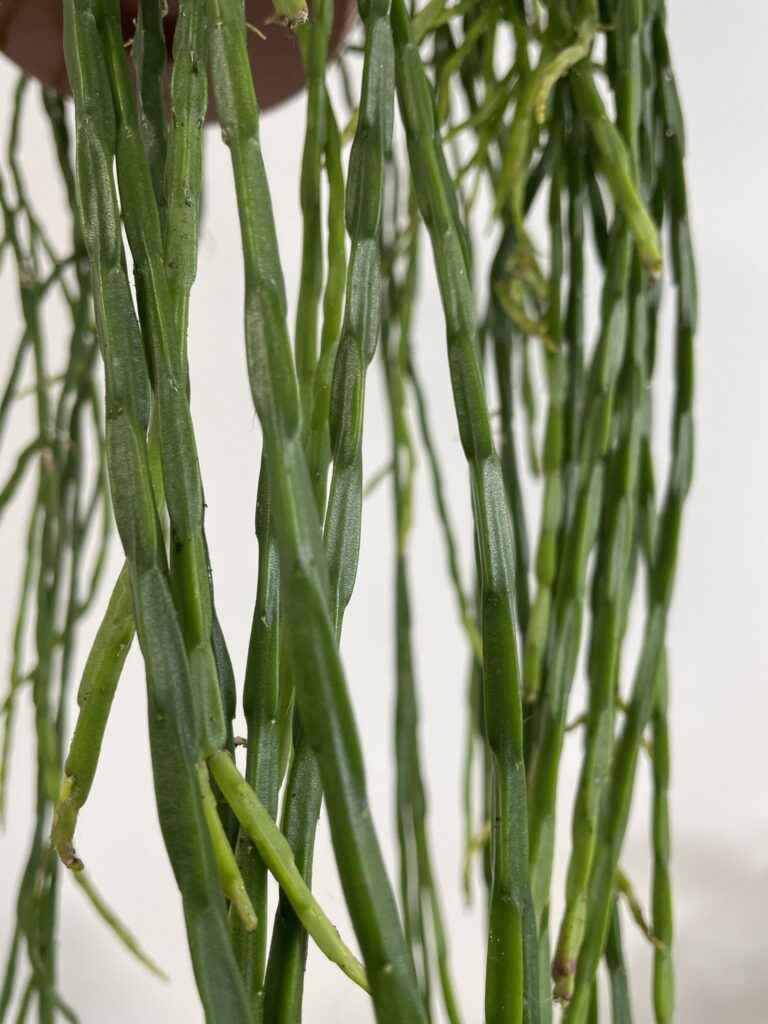Table Of Content
- About
- Light
- Humidity
- Water
- Soil
- Pests & Disease
- Feed
- Pruning & Propagating
- Repotting
- Troubleshooting & Tips
- Toxicity
- Species
- Rhipsalis Paradoxa Minor
- Rhipsalis Paradoxa Chain
- Rhipsalis Elliptica
- Rhipsalis Cassutha (Mistletoe Cactus)
- Rhipsalis Red Coral
About
Rhipsalis is a highly interesting genus of plants that is surprisingly part of the cactus family and is the only cactus in the family that grows outside of North and South America. There are approximately 35 to 60 species that make up this genus of epiphytic (grows on trees) and lithophytic (grows on rocks) plants that can be found in the rainforest of Central and South America, remote jungles of Africa and Asia, and a few islands throughout the Indian Ocean. This genus has been one of the most successful members of the family and has spread itself further than any cacti has gone before!
While in the same family as cacti this plant is very different. Often the way to take care of these plants is not the same as how you would expect to look after a regular dessert cactus. While most species of cacti are known to be covered in needles and preferred to live in dry and arid environments, Rhipsalis is quite the opposite and would struggle to survive in the same conditions due to its lack of needles and ability to tolerate the glaring sun. These differences have put Rhipsalis into its own category of cactus often referred to as the jungle cacti.
This stunning plant is more of a trailing wonder, in its natural habitat, it produces narrow thread-like stems that wrap and twist around trees stretching out up to 30 feet long, producing gorgeous displays of red, yellow, orange or white flowers that eventually turn into berries. While not impossible for it to flower as a houseplant it is highly unlikely to be able to recreate its natural conditions well enough to encourage them to flower but nonetheless still makes for a stunning trailing houseplant.
Light
Rhipsalis are surprisingly versatile plants when it comes to light conditions. In the most optimal spot, this plant will receive a few hours of direct sunlight in the morning while spending the rest of the day in a flood of indirect natural light. But can also tolerate lowish light locations, as long as there is a relatively high temperature and it is still receiving some ambient light.
It’s important to know that without a high enough level of light the plant will never stand a chance of flowering and may even stunt growth. You can also encounter problems if the plant is exposed to high levels of direct sunlight throughout the day, this will cause sunburn and scorching.
Humidity
Rhipsalis are not overly fussy when it comes to humidity level and are more than happy with the average humidity of most rooms around 40%. But it’s good practice to remember this cactus is coming straight from the jungle so will not be happy in a dry environment and will need a decent level of humidity to stay healthy. This problem can often arise when the heating comes back on in the winter, this plant will not enjoy being near a radiator or draft that will draw the moisture out of the air.
Pro Tip
The best way to maintain high humidity is to use a humidifier placed about a meter away from your plant to provide high ambient humidity. Alternatively, you could place your plant on an undertray filled with Leca pebbles or small stones that are sitting in a shallow layer of water. Make sure the plant is not submerged in any water as this can lead to root rot. As the water from the undertray evaporates from the surface of the pebbles or stones it will keep humidity levels high exactly where you need it most.
Water
The water requirement for this plant heavily depends on the location of the plant, the shadier the position the less water it will need and the more ambient and direct sunlight the plant receives the more often it will need to be watered. But in either case, the soil of the plant wants to be kept slightly moist but never saturated or overly damp to the touch. These plants are very sensitive to overwatering and can often struggle as a result.
If in doubt it’s better to keep these plants on the drier side and they will often let you know if they are desperate for a drink. When they become dehydrated the tendrils start to lose their rigidity and the plant begins to droop and pucker, if left to dry out further often the tendril will start to turn brown and become crispy. But if your plant ever reaches this stage it’s not the end of the world. Rhipsalis are robust and forgiving and will soon bounce back once watered.
Soil
Being epiphytes, in their natural environment Rhipsalis never normally grow in soil but as a houseplant, they will need a soil mix that is nutrient-rich, allow for good aeration, be slightly acidic and be sharply-draining with a smidge of water retention. In most cases, a cacti compost will do the job adequately.
Other good potting mixes for Rhipsalis can be made up of; 4 parts shredded bark (orchid bark will do the same job), 2 parts perlite, and 2 parts sphagnum moss. Or just a regular houseplant potting mix enriched with perlite, for this mix it’s best to go for 60% houseplant potting mix and 40% perlite.
Pests & Disease
Rhipsalis are tough and resilient plants but they can still suffer from pests. It is good practice to regularly check your plants for any signs of aphids, red spider mites, mealy bugs, and thrips. By checking regularly, you allow yourself time to prevent a full-blown attack.
The most common pests Rhipalis tend to suffer from are mealy bugs. This will normally occur from a lack of airflow. If you can increase airflow the pests tend to subside but will need to be treated to fully get rid of the issue.

Check our video on homemade pest remedies or head over and read Fungus Gnat Fact Check and Home Remedies how to guide
Feed
Like most houseplants, to promote healthy roots, stems, and leaves they will need a steady supply of nitrogen, phosphorus, and potassium. A good liquid houseplant feed can be applied once a month during the growing season but for best results use a cacti-specific feed. There’s no need to feed during the winter, light levels are much lower and the plant won’t use as much energy to grow.
If you are lucky enough to develop flowers on your Rhipsalis, to help promote them it’s a good idea to switch to a feed that has higher levels of potassium for example a liquid tomato food.
Pro Tip
Make sure that the plant has been pre-watered before feeding, this will help to prevent root burn.
Pruning & Propagating
There is not much pruning to be done with a Rhipsalis; it is more a plant you leave to just get on with it. It is a good idea to prune any failing, diseased, or dying growth.
Always use a clean and sterilised pair of scissors or secateurs to trim back!
Dividing Rhipsalis is the quickest and easiest way to propagate these plants. It is a really simple and easy job the natural division points are clear to see and will often only need a gentle pull apart. Ensure that each clump of plant has a decent amount of roots attached before pulling it away from the main root ball. With especially large or mature plants it may be tricky to pull these clumps apart as the roots will be tangled forming a strong bond between clumps. In this case, it is best to use a sterilised sharp knife to cut through the root ball, again ensuring to leave a decent amount of roots on each section you are dividing.
Top Tip
Dividing plants can cause shock and be a traumatic experience for your plant. So make sure the plant is in good health and has been well watered the day before to give the plant the best chance of survival.
Another way you can propagate is by taking a stem cutting during periods of growth in the spring and summer. Look for the healthiest growth on the plant and take around a 15cm cutting from the stem.
You need to let this cutting sit on a sunny window sill for a few days to allow the wounds to dry and heal over.
Then place the cutting into a smallish pot with cactus potting mix
Place the pot on a window sill where it will only get a few hours of direct morning light a day.
You’ll need to place a plastic bag or something similar over the top of the pot to lock in moisture and extra warmth to help the cutting to take to the soil. Once a day you’ll need to remove the bag to allow for good air circulation.
In around a month’s time, the cutting should develop root at which time you can remove the plastic bag and continue to grow the plant.
Repotting
It’s best to repot your Rhipsalis once the roots fill their pot. Depending on the size of the plant, you may find yourself repotting every year or year and a half. That being said, they don’t mind being pot-bound, they can survive like this for quite some time, as long as they are receiving enough nutrients via feeding.
The pot size only wants to increase by a small margin as it’s easy for these plants to drown in pots that are slightly too big.
If you have reached your maximum pot size you will need to top-dress the plant once a year with a fresh layer of soil to replenish the nutrients.
The best time to repot your plant is when spring arrives. Outside temperatures will rise and the daylight hours will increase. When this happens your Rhipsalis will react quickly to the environmental change and start producing lots of new foliage growth.
You will need to pick a pot with good drainage, we don’t want water hanging around the roots.
Next, fill a third of the way up with your cacti potting mix and place the root ball of the plant in the centre of the pot.
Fill the pot with the rest of your potting mix and firm down the soil.
When you’ve finished and got your plant back in the perfect spot you can give it a thorough watering to settle the plant into its new pot. Keep a close eye on it for the first couple of weeks and then relax back into your normal watering and feeding schedule. Avoid feeding for the next 6 weeks as this influx of additional nutrients can cause damage to the root system and make it difficult for the plant to settle into its new environment.
Top Tip
Rhipsalis is best suited to terracotta pots, this allows for better aeration through the soil and lowers the chance of rot root.
Troubleshooting & Tips
- If the leaves of the plant have become yellow and soft to the touch this is an early indicator of root rot.
- If your plant has developed a red tinge this is a sign the plant has been exposed to too much sunlight without being able to grow a tolerance for it. Best to move to a low-light location.
- Stunted and slow growth is often a consequence of light conditions being too low.
- If you are determined to see flowers on your Rhipsalis, keep in mind that it needs to first reach maturity and will require a long dormant winter before producing flowers.
- Try to avoid using cold water when watering as this can send the plant into shock.
Toxicity
Rhipsalis is non-toxic and poses no threat to humans or animals if ingested. In some cases, if the plant comes into contact with the skin it can cause mild irritation.
Species

Rhipsalis Paradoxa Chain
Highly sought after and very similar to the Paradoxa Minor the Paradoxa chain has much more distinctive features and tends to be a more compact plant. With the ability to comfortably reach around 5 metres as a houseplant, this would look incredible as a trailing shelf plant where it can cascade down and create an almost flowing river of foliage.




Rhipsalis Elliptica
This Rhipsalis is a true wonder to watch grow and mature. The fleshy unusual leaf-like foliage grows in compact little sections. With each new section growing off the tip of the previous one. This easy-to-care-for plant would look stunning in a high-standing pot where you could look down on the foliage as well as see it trail down the sides.



Rhipsalis Cassutha (Mistletoe Cactus)
This tropical forest cactus is a beautiful example of a hanging plant. Producing an abundance of slim and slender succulent-like leaves that seem to burst out of the centre of the pot and over the edges to delicately trail towards the ground. Given the name ‘Mistletoe Cactus’ because of the similar-looking berries, it can produce when the plant reaches maturity.





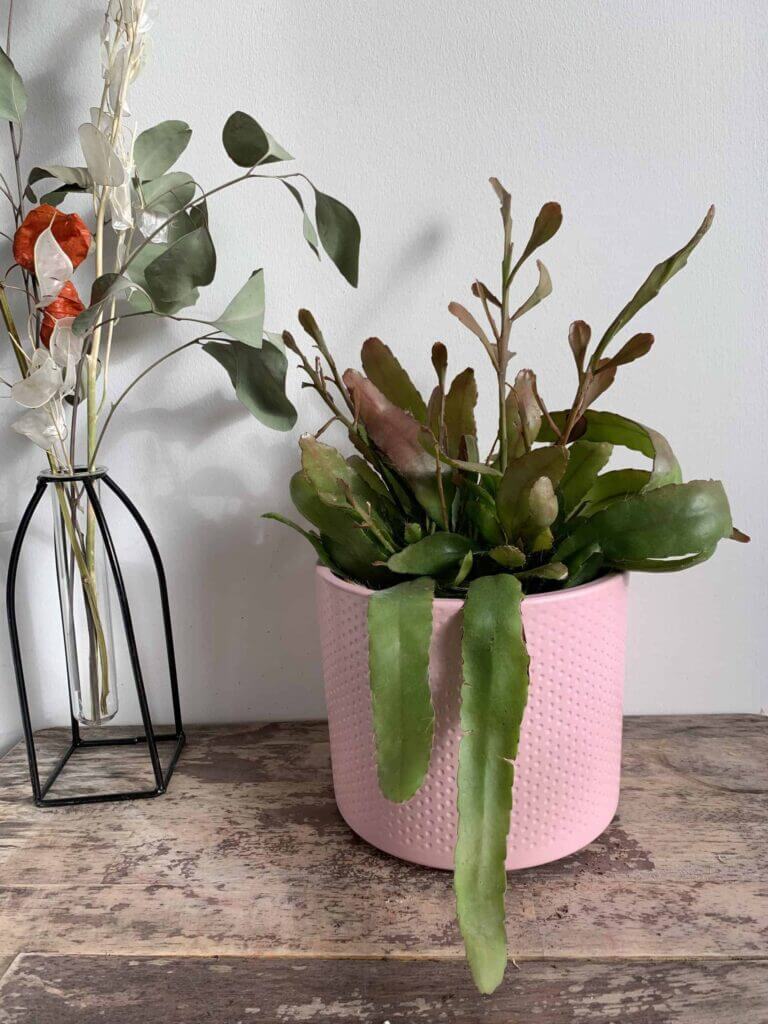
Rhipsalis Red Coral
A great splash of colour that increases over time to create a plant covered in warm pinky/red, flat and slender foliage. This plant makes for an incredibly unique hanging plant as the almost snake-like stems dangle down from the pot. As this plant matures it turns into a true wonder of gorgeous colour and imposing presence.
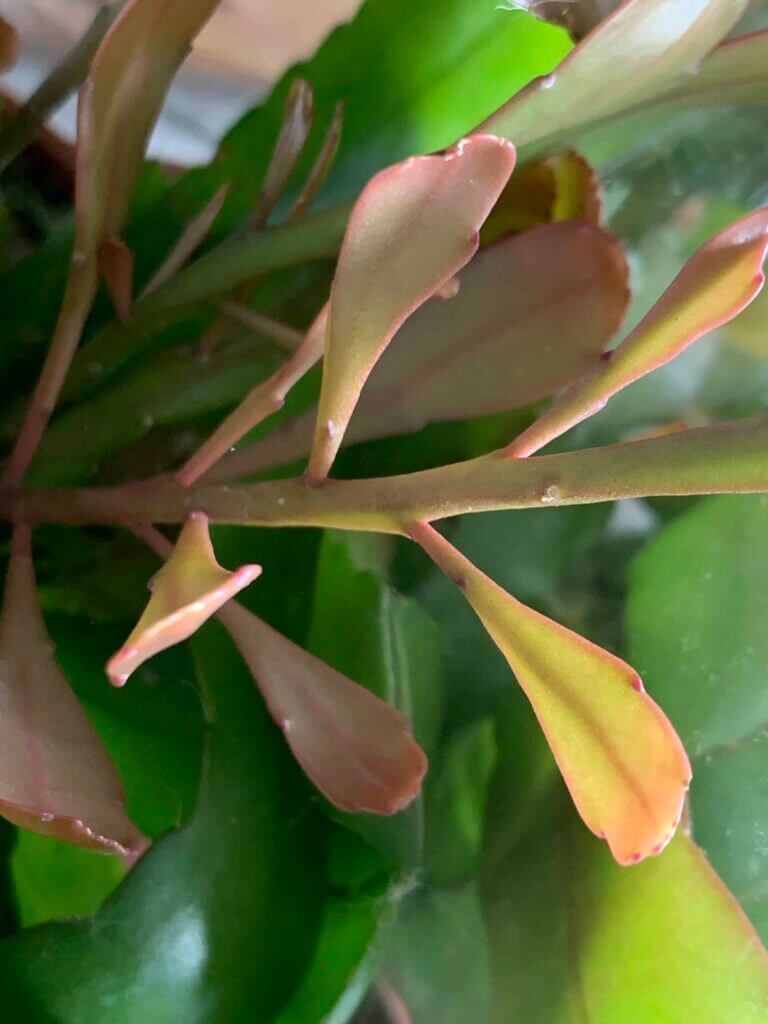

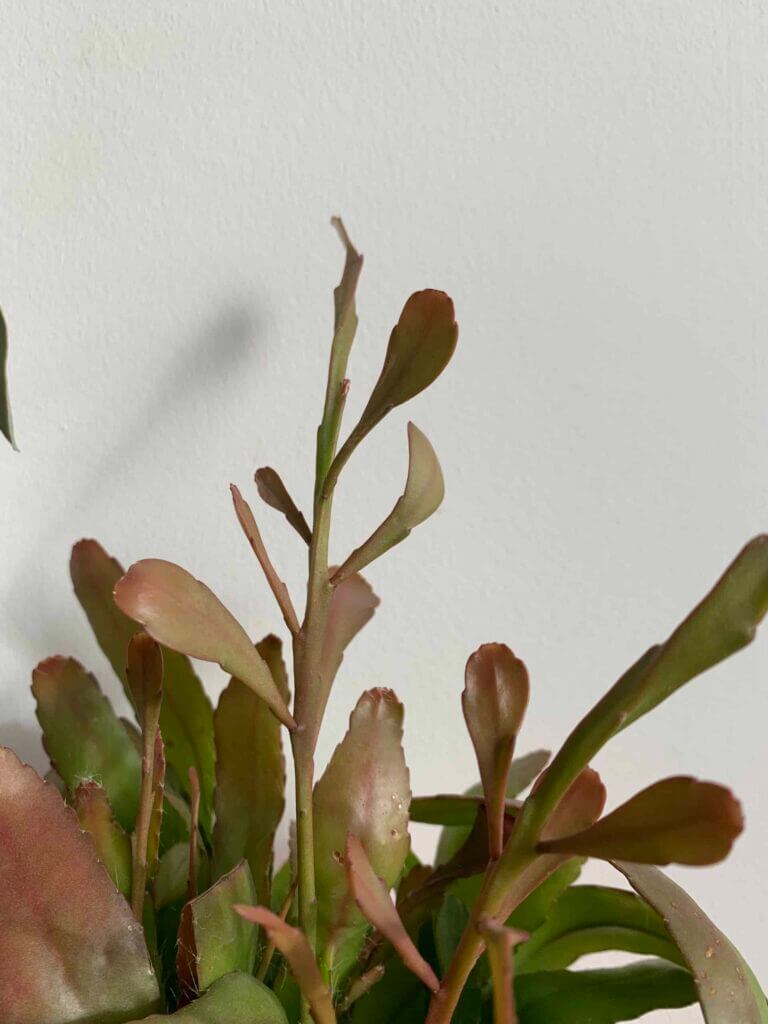
If you enjoyed this guide head over to Articles & Blogs to learn more or check out our YouTube for even more useful information!


